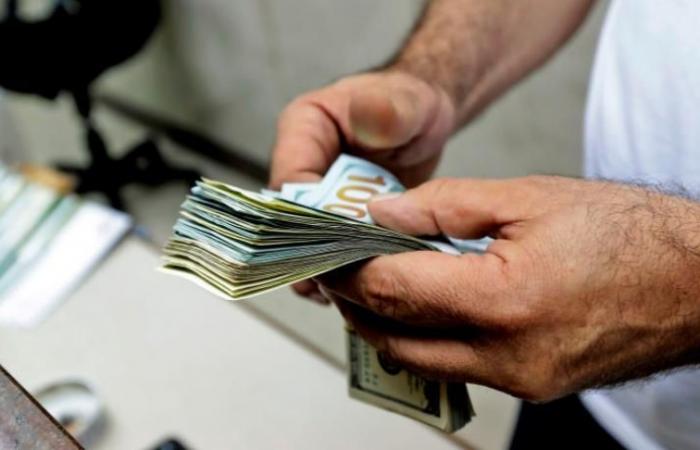Ali Zainuddin wrote in Asharq Al-Awsat:
The sharp price rises in all areas of spending that are not subsidized in the Lebanese market indicate the type of grave risks that will follow. The inability to provide the necessary funds allocated by the Central Bank to support financing of strategic commodities at a rate equivalent to only about 17 percent of the actual price of the dollar, and for food commodities at a price of about 45 percent. This correspondence is directly related to the continuing decline in the price of the lira on the parallel exchange market.
The detailed data collected by the Central Statistics Department showed that the prices of furniture, household appliances and household maintenance rose by 664 percent annually at the end of the eighth month of this year. Costs in hotels and restaurants increased by more than 500 percent, and the prices of clothes and shoes rose by 413 percent, accompanied by an increase in food prices by 367 percent, and tobacco prices also soared by increases of more than 400 percent.
Estimated calculations assume that whether to lift subsidies permanently or assume the market price of the dollar is adopted, a huge shock will occur in the markets commensurate with these sharp rises in the prices of unsupported goods and materials, linked to the currency exchange rate and the fact that the import covers about 80 percent of the needs of domestic consumption. Which automatically explains the severity of the achieved inflation with the high price of the dollar close to the threshold of 9 thousand pounds, which is approximately 6 times the official price set at 1515 pounds.
The subsidy, which is threatened with cancellation before the end of this year due to the shrinking of the central bank’s usable reserves of hard currencies to less than 3 billion dollars, continues to contribute effectively to delaying the arrival of the state of “hyperinflation”, as the sharp waves of prices did not include vital areas of household spending until now. On top of which is housing, transportation, communications and education, which was reflected in the curbing of the average price index at the limits of 120 percent until the end of last August, thus accumulating a balance of about 230 percent, when calculating the percentage achieved in the same period last year. Indeed, the Governor of the Banque du Liban, Riad Salameh, explicitly indicated that he had informed the government not to violate the compulsory reserves of banks in foreign currency for purposes of support, indicating in the last monthly meeting with the Board of Directors of the Association of Banks, “This matter will allow him to support him for a period of two or three months for basic materials, especially fuel. , Wheat, and medicine at an exchange rate of 1,500 Lebanese pounds to one US dollar, and foodstuffs at an exchange rate of 3900 Lebanese pounds to one US dollar. ” He hoped «that the government will complete the proposal of the cards in order to preserve the purchasing power of the most vulnerable groups to living conditions».
Driven by the concerns left by Salama’s repeated warnings about the cessation of subsidies and the faltering of political solutions, the markets, according to wholesalers, owners of supermarkets, stores and pharmacies, are still witnessing a remarkable demand from consumers to stockpile all kinds of subsidized materials such as flour, medicines and basic foodstuffs, in anticipation of the immediate lifting of subsidies. Rather, consumers deliberately stored “gallons” of gasoline despite the extreme risk of such behavior. There is also an outright race between consumers and smugglers to acquire “diesel” which is scarce in gas stations, despite the continued import of quantities according to the usual tables of average consumption.
The financial statements of the central bank’s budget confirm the seriousness of the hemorrhage occurring in the stock of foreign currency reserves at the central bank. According to the latest statistics, the value of BDL’s external assets decreased by 32.68 percent, equivalent to $ 12.29 billion at the end of the third quarter of this year, compared to the level it was in the same period last year.
Thus, it is estimated that the amounts that can be used for support are less than 3 billion dollars, given the urgent foreign expenses of the state. The total value of reserves decreased to about $ 25.9 billion, including a $ 5 billion international debt portfolio. Given that “Eurobonds” (debt securities in hard currency) are pending payment as government debt and are not liquid until further notice, it is necessary not to count them within the liquidity of the reserve, which drops to about $ 20.9 billion, while the safety of the “red line” is specified when the compulsory reserve is reached with a bank. Lebanon has deposits in dollars in favor of customers in banks. It is currently around $ 17 billion in hard currency deposits, about $ 114 billion.
These were the details of the news Lebanon is sensitive to the dangers of an “earthquake” of high... for this day. We hope that we have succeeded by giving you the full details and information. To follow all our news, you can subscribe to the alerts system or to one of our different systems to provide you with all that is new.
It is also worth noting that the original news has been published and is available at saudi24news and the editorial team at AlKhaleej Today has confirmed it and it has been modified, and it may have been completely transferred or quoted from it and you can read and follow this news from its main source.

